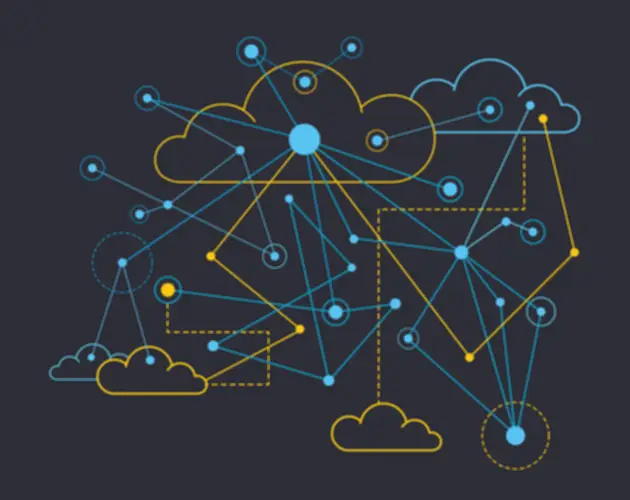A shopper electronics firm implemented AI-based inventory optimization tools, resulting in a 20% discount in inventory holding prices. The AI predicted optimal stock levels with 98% accuracy and automated replenishment processes, lowering stockouts by 30% and overstocking by 25%. An apparel manufacturer used AI-powered demand forecasting instruments to analyze historical sales knowledge and market developments.
Ai In Stock Management: A Must-have Information For Smarter Inventory Management
For occasion, if a machine begins vibrating more than usual, the AI system alerts upkeep teams before a breakdown happens. By utilizing AI, manufacturers can optimize their operations, raw resources, delivery logistics, and property with transparency and accountability. And AI can help with robotic course of automation (RPA) for paperwork, like buy orders, invoices, and quality control reports. However, despite its benefits, AI adoption comes with challenges similar to high infrastructure prices, knowledge integration points, and the necessity for skilled personnel. Many firms struggle with implementing AI options that seamlessly match into their existing manufacturing processes.

Supply Chain Management
AI-based systems can monitor vitality and supplies usage and supply system or workflow adjustments to assist reduce waste and improve energy efficiency, which additionally contributes to sustainability initiatives. AI-enabled video methods can monitor production environments for potentially hazardous conditions or to establish unauthorized entry to restricted areas to stop potential mishaps. Regardless Of AI's immense potential, manufacturers face significant challenges in implementation, starting from excessive infrastructure costs and integration complexities to safety concerns and a scarcity of skilled professionals.
AI optimizes provide chain logistics, inventory administration, and procurement processes, bettering efficiency, reducing prices, and enhancing general provide chain resilience. It analyzes information to optimize processes, boosting efficiency, reducing costs, and enhancing quality with eagle-eyed AI high quality control. By connecting the digital twin with sensor knowledge from the gear, AI for the manufacturing business can analyze patterns, establish anomalies, and predict potential failures. These systems can recommend adjustments that cut back energy costs and reduce environmental impression.
This allows companies to bring manufacturing closer to demand, reduce logistics costs and quickly respond to altering wants. Some industries—like electronics, automotive and pharmaceuticals—are currently experimenting with these transportable items. The concept’s full potential lies in future advancements in automation, modular design and knowledge integration, which will make it a scalable, mainstream solution. Collaborative robots (cobots) are particularly designed to work alongside human workers, enhancing productiveness and security whereas dealing with repetitive or bodily demanding tasks. For instance, electronics producers use cobots for precise component placement, considerably bettering each effectivity and accuracy in the assembly course of. Cobots characterize a big advancement in automation, bridging the gap between human capabilities and machine precision.
Therefore, companies can make extra informed decisions regarding resource allocation, supply chain administration, and advertising strategies. Synthetic intelligence (AI) is reworking manufacturing at an unprecedented tempo, ushering within the period of Industry four.0—a new industrial revolution outlined by automation, good factories, and data-driven decision-making. AI is enhancing efficiency, precision, and flexibility in manufacturing, helping companies cut back costs, increase output, and optimize supply chains. For instance, a leading automotive manufacturer carried out an AI-powered predictive maintenance system and saw a 20% reduction in unplanned downtime.
How Appinventiv’s Customized Ai Solutions May Help You Achieve Manufacturing Excellence
- Manufacturers can maintain a relentless eye on their stockrooms and improve their logistics because of the continual stream of data they collect.
- A clear leader who ensures that AI tool deployment is tied directly to an organization’s top-level technique can be positive that the right areas are being prioritized.
- While it ensures clear knowledge and simplifies AI integration, it can also limit AI’s capacity to learn and adapt to unique conditions.
- This use case of AI is a game-changer for manufacturers trying to leverage the advantages of additive manufacturing in their operations.
One of the most Software Development exciting purposes of AI in digital twins is digital product testing and validation. By making a digital replica of a product and subjecting it to various simulated situations, manufacturers can determine potential issues and optimize designs earlier than making a bodily prototype. This strategy saves time and money and allows for more iterative and revolutionary product development.
GE is one practical instance of how artificial intelligence changes manufacturing unit efficiency optimization. GE has integrated AI algorithms into its manufacturing processes to investigate large volumes of data from sensors and historical records. Using AI, GE can spot tendencies, predict probable equipment points, and streamline processes. By taking this proactive strategy, GE also can scale back equipment downtime, boost total tools effectiveness, and enhance manufacturing operations efficiency. Synthetic Intelligence (AI) in manufacturing refers to the usage of superior algorithms and machine learning methods to boost and optimize production processes, improve effectivity, and foster innovation. It consists of the integration of AI applied sciences, like laptop vision, predictive analytics, robotics, and machine learning into various levels of manufacturing.
Demand prediction is certainly one of the major AI manufacturing use cases that is reworking the business. This helps them anticipate fluctuations in demand and adjust their manufacturing accordingly, decreasing the risk of stockouts or extra inventory. Throughout sectors, firms are accelerating remanufacturing as a way to mitigate supply chain shortages, reach new clients through affordability, and implement high-margin alternate options for components. As the costs of cloud storage and processing and prepackaged instruments lower, AI is turning into more accessible for organizations, serving to them improve efficiency, yield, and margins. By integrating AI with robotic techniques, producers can achieve superior automation capabilities, the place machines can be taught and adapt to varied tasks without human intervention. AI algorithms enable robots to perform advanced operations, including high quality control inspections, meeting duties, and predictive upkeep, with excessive accuracy and consistency.
Major manufacturers are saving hundreds of thousands by avoiding catastrophic failures and optimizing their maintenance schedules. For smaller producers, AI-driven predictive maintenance ranges the playing field, permitting them to operate with the identical reliability and efficiency as bigger competitors. Sure instruments specialize solely in optimizing manufacturing processes, while a comprehensive set addresses both manufacturing processes and supply chain optimization. Manufacturing AI solutions could be categorized into three segments, aligning with the various objectives they fulfill throughout the manufacturing ecosystem. Due to the shift towards personalization in client demand, producers can leverage digital twins to design varied permutations of the product. This permits clients to purchase the product based mostly on performance metrics quite than its design.

Starting in 2024, Basic Electrical (GE) launched the Proficy for Sustainability Insights, a new software program solution that helps producers reach their sustainability targets, whereas maximizing productivity and profitability. The platform makes use of cameras, sensor know-how, and AI to automate quality processes within the conveyor belt. Algorithms and AI analyze the information recorded by these in real-time and ship immediate feedback to staff on the manufacturing line by way of smart units. This collaborative strategy to automation improves efficiency, flexibility, and ergonomics in manufacturing operations whereas allowing employees to concentrate on extra complex duties that require human intelligence. This allows producers to anticipate adjustments in demand extra precisely, optimize stock levels, and make knowledgeable decisions about production, procurement, and resource allocation. Robotics combine AI with mechanical engineering to create machines (robots) that may perform tasks autonomously or with minimal human intervention.
The AI provided demand predictions with 95% accuracy, enabling more practical production and inventory planning. This reduced excess inventory by 20% and stockouts by 25%, resulting in a 15% enchancment in buyer satisfaction and a 10% increase in gross sales. In the food and beverage trade, an AI-powered automated materials handling system optimized the transportation and storage of uncooked supplies. The system’s optimization algorithms improved routing efficiency by 25% and lowered errors by 15%. This enhancement elevated overall throughput by 20% and reduced downtime by 18%, guaranteeing timely delivery of uncooked materials to manufacturing strains.
AI techniques use cameras and sensors to examine gadgets as they are produced, catching fantastic errors that human eyes might miss. AI uses sensors and cameras to continuously monitor the surroundings for potential dangers. When it detects a risk, such as unsafe machine movements or hazardous situations, it alerts staff instantly or stops the machine automatically. By ensuring a safer workplace, AI not only protects folks but also minimizes manufacturing downtime caused by accidents, making the manufacturing unit a safer place to work.

These techniques analyze pictures of merchandise as they are manufactured, flagging inconsistencies or faults with higher accuracy than human inspectors. For occasion, electronics producers use AI-driven high quality control to help ensure that parts meet strict specs. These checks resulting in improved product high quality, lowered waste and elevated customer satisfaction. By using a digital twin to assess patterns in gear conduct and performance, these systems can alert operators about potential issues early, allowing them to stop breakdowns before they escalate. Automobile manufacturers, for example, employ predictive maintenance on assembly-line robots, significantly reducing unplanned downtime and resulting in substantial cost financial savings. This approach additionally permits manufacturing firms to plan maintenance during nonpeak hours to reduce disruption to manufacturing schedules.
